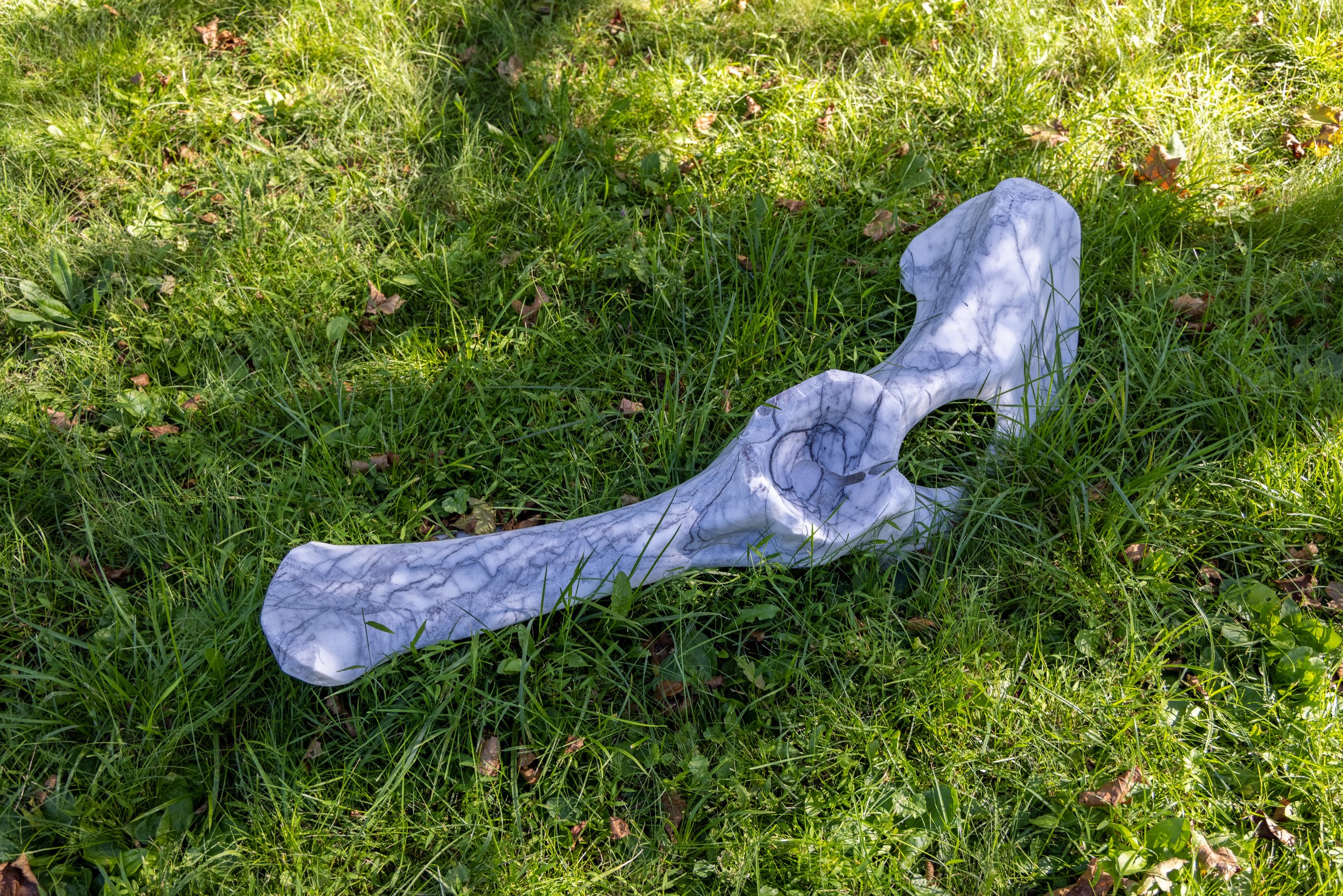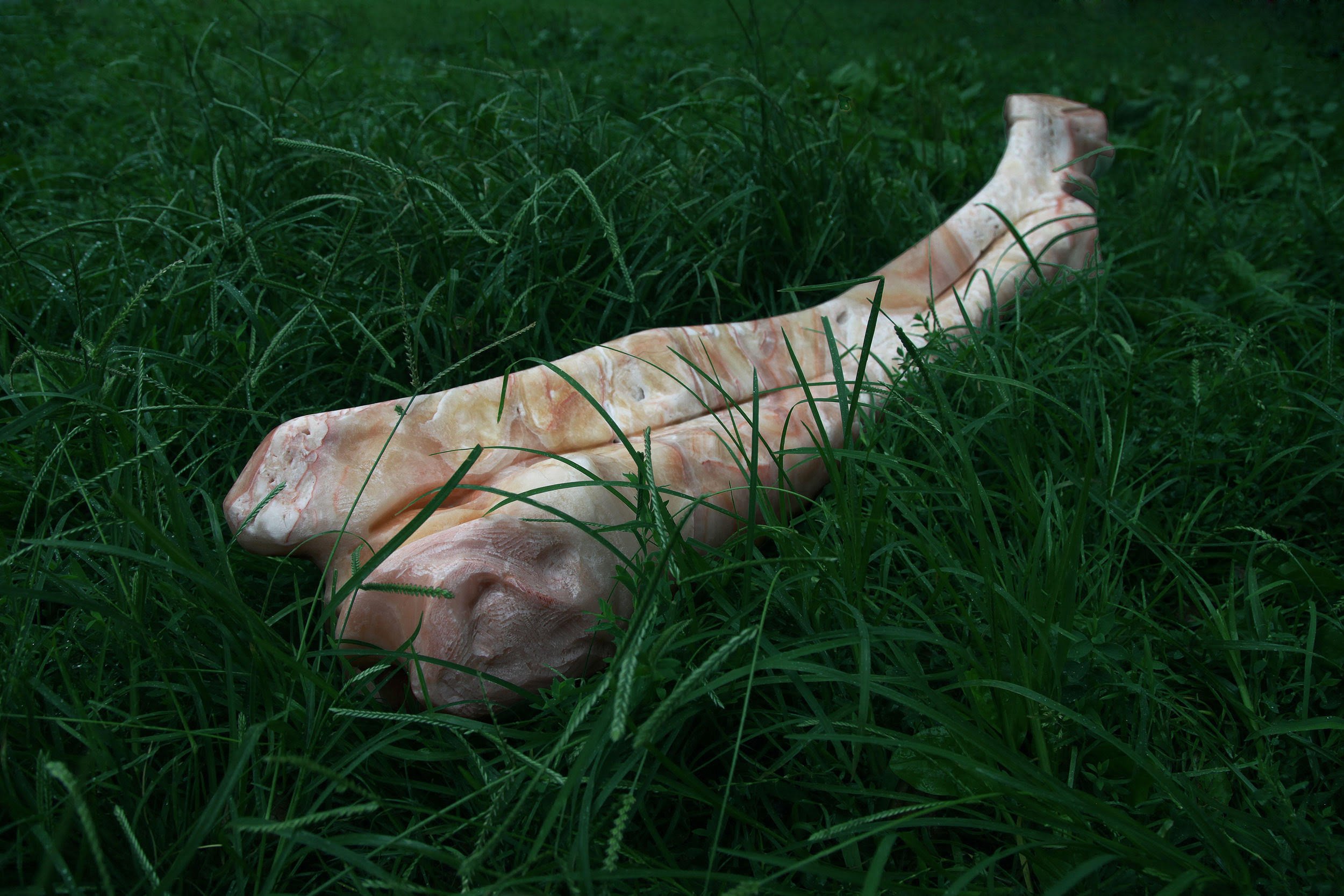Lets Eat Columns
Stephen Shaheen
August 14th - December 14
Curated by JAG Projects
Text by Ajay Kurian
Makers know that materials have their own resistances and ask for a kind of forbearance that, if heeded, grows into an agreement between maker and material - an intimacy. For the stone carver with a metaphysical bend, this intimacy is both private and sublime. They sit in the studio with their stone as a matter of fact while also acknowledging the 300 million years it took for their material to take shape. Subjecting this material to their own vision is both jaw-droppingly bold as well as casually accepting of one’s geologic insignificance. The crystallized bones of Paleozoic sea life nearly instantaneously turned to dust, absorbed by the carver, and are redistributed globally; the carver will then eventually die, return to the soil and play their very small part in the cycle of the Earth’s mineral breath.
Stephen Shaheen works at this juncture of structure and decay, reverence and irreverence, teasing out our cultural and historical connections to Earth’s geological memoir. His practice has taken many shapes, but a common stitch remains his sculptures of invented bone forms. These forms do not abide by mere biological classification. The seed of one could be a raccoon humerus but mutate into a new attenuated, enlarged, and variegated form, resulting in a six foot monstrosity that has no clear biological origin. They are both abstract and hyperreal - a collage of fact, fiction, and material precision. Every surface is a series of thousands of decisions that leave traces of human labor - chisel marks, machine cuts, and pencil - as well as conjure the magic of impossible fabulation.
Shaheen selects atypical stones, ones with strong vascularity, anomalies, even defects. Their strangeness often elicits equally strange formal and conceptual invention, however Shaheen’s selection is also partly due the overburdening of conventions associated with the material. You will not find white Carrara marble here. Rather than herald or continue the material legacies of Empire, Shaheen is more keen to focus on the elegy that stone can elicit. Columns become bones, become sculpture; where the memento mori gestures beyond individual lives and towards a deeper existential fact, that even the earth is temporary.





